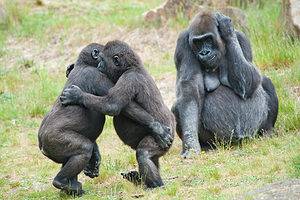Cross River Gorillas are a critically endangered subspecies of gorillas. They live in the lowland forests of Cameroon and Nigeria, but they are reclusive and shy of humans. We knew little about them until recently! We still don’t know a great deal, but that doesn’t mean we know nothing! Here are 10 incredible Cross River Gorilla facts.
1. Only 200-300 Incredible Cross River Gorillas Remain

There are about 200 to 300 Cross River gorillas left in the world.
©Takaip/Shutterstock.com
Only 200-300 Cross River Gorillas are left in the world. For comparison, there are 35,000 Western Lowland Gorillas. That makes them critically endangered. In fact, they are Africa’s most endangered ape.
Habitat destruction is the reason for their dwindling number. Poaching is also a problem because even the loss of one in such a small population has a big effect.
Crocodiles and large jungle cats such as leopards prey on Cross River gorillas. Humans also illegally hunt them for bushmeat.
2. Governments Have Created a Special Area For Them

Areas of the Cross River State, like the Obudu mountains, provide habitats for these primates.
©Laminartosin, CC BY-SA 4.0, via Wikimedia Commons – License
These incredible endangered gorillas live on the Nigeria and Cameroon border in thick, dense jungles. The mountainous Cross River Basin gives them their name.
The World Wildlife Fund, along with Nigeria and Cameroon’s governments, have created a protected conservation area spanning the border. These endangered gorillas are so precious they have 24/7 guards to keep them safe from humans.
3. They Are The Smallest Gorilla Subspecies
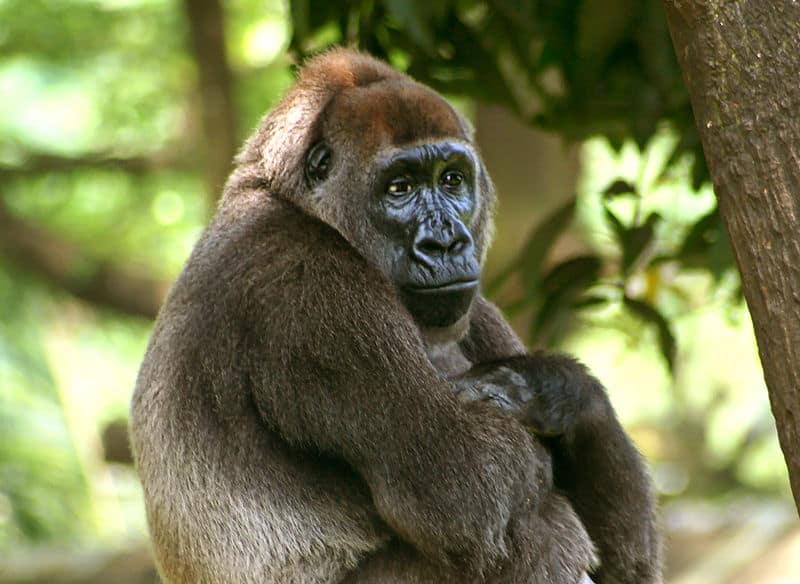
Cross River Gorillas are preyed on by crocodiles and big jungle cats
©Julielangford / CC BY-SA 3.0 – License
Out of the gorilla species, Cross River Gorillas are the smallest. They are shorter at 4-5.5 feet and weigh up to 440 pounds. Their faces are more delicate with smaller eyebrow ridges.
Compared to cousins such as Eastern Lowland Gorillas their appearance is compact. Eastern Lowlands can reach over 6 feet on average and weigh 550 pounds.
The largest ever Eastern Lowland Gorilla weighed 860 pounds. His name was Phil! He was raised at the St. Louis Zoo before dying at a ripe old age.
4. One Male Cross River Gorilla Is In Charge
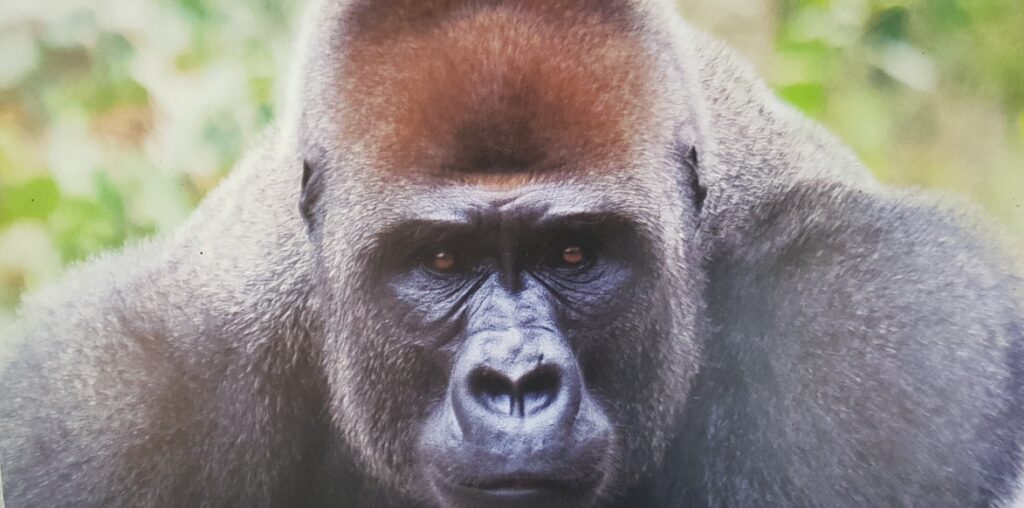
The dominant male will decide if they nest on the ground or in the trees depending on the season.
©Fkamtoh, CC BY-SA 4.0, via Wikimedia Commons – License
Cross River Gorillas live in small family groups of up to 4-7 individuals. The group is led by a dominant male who makes all the decisions! He chooses nesting sites and when the group can eat.
The dominant male will decide if they nest on the ground or in the trees depending on the season. If challenged he will stand tall, beat his chest, and roar. Often, this male will have a patch of white fur on his back. This is why adult males are called silverbacks.
Any new males born into the group that feels dominant have to leave and set up their own family group.
5. They Throw Sticks At Humans!
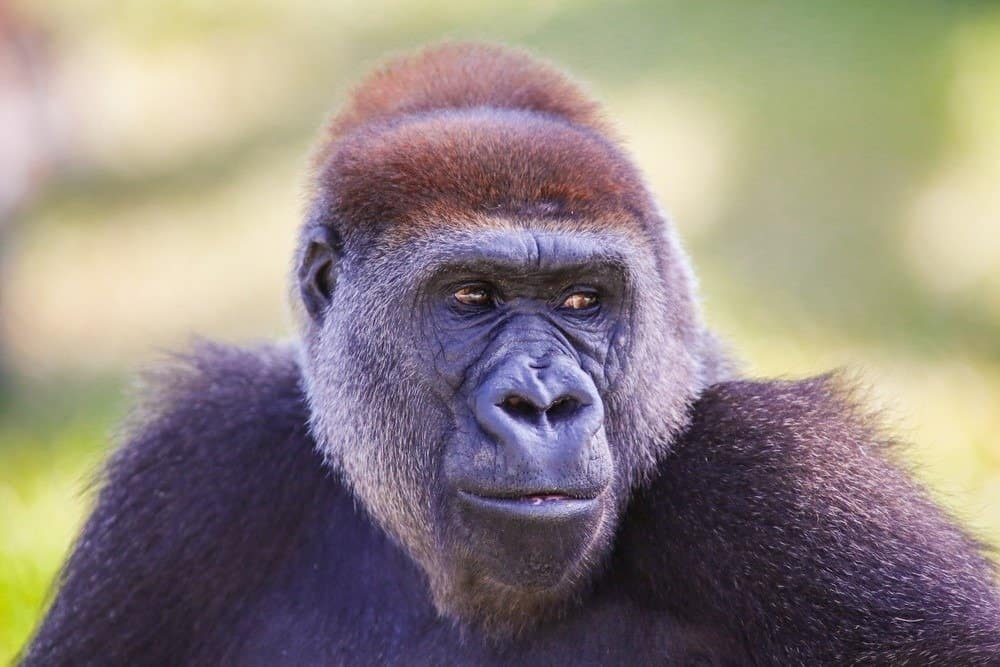
Cross River Gorillas throw sticks, mud, and long grass at humans!
©Kit Korzun/Shutterstock.com
Most gorilla species move away from nearby humans. Cross River Gorillas are a bit bolder!
They’ve thrown sticks, long grass, and mud at humans they deemed too close. It’s unusual behavior and experts say it’s down to their close contact with farmers which is usually to their detriment.
6. In 2020 Incredible Images of Baby Apes Were Captured
In 2020 conservationists managed to take photographs of Cross River Gorillas carrying multiple babies. This is an incredible fact because they are notoriously difficult to photograph. 50 cameras were set up in 2012 took 8 years to get the photos!
Cameroon’s Kagwene Gorilla Sanctuary, Nigeria’s Mbe Mountains community forest, and Afi Mountain Wildlife Sanctuary captured the photographs. They are conservation areas set aside to protect the gorillas.
The photos caused a lot of interest because they proved this endangered species was managing to reproduce.
7. Cross River Gorillas Were Only Discovered In 1904
Cross River Gorillas are recluses and they are shy of humans. They were discovered in 1904, but scientists didn’t survey them until 1987. Incredibly, Cross River Gorillas weren’t captured on professional video until 2009!
8. They’re More Dextrous Than Other Gorillas
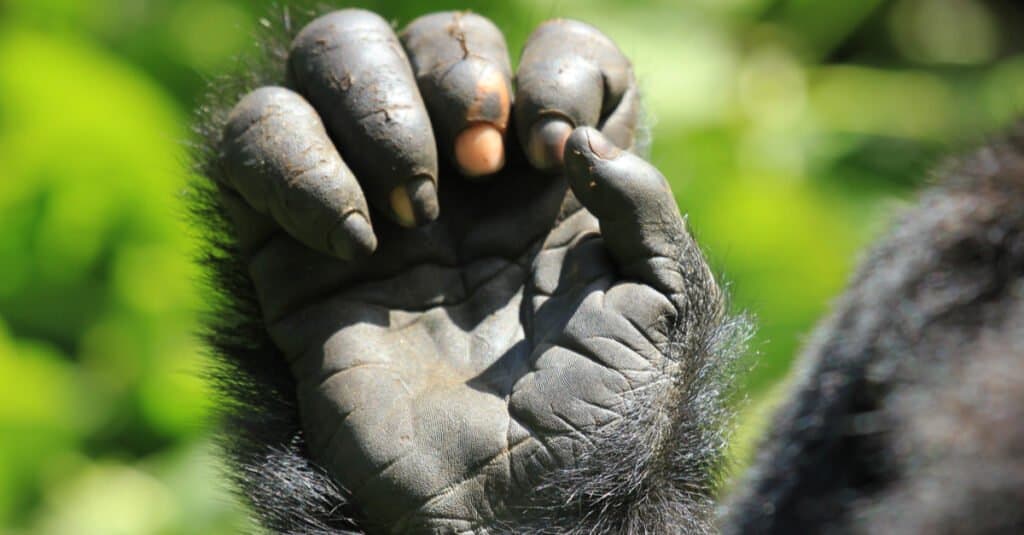
Cross River Gorillas are incredibly dextrous
©Axel Koehler/Shutterstock.com
Scientists studying skeletal remains think Cross River gorillas are more dextrous than other gorilla species such as Western Lowlands.
Finger bones show they have more opposable thumb flexibility. Dextrous thumbs help them peel ginger stems which is one of their favorite herbs to eat. It also helps them make basic tools and throw the aforementioned sticks at humans!
In general, gorillas have excellent dexterity. Some species use sticks to measure water depth and pull tasty ants from their burrows. It’s one of the main activities that really brings home how closely we’re connected to great apes.
9. There’s Only Ever Been One In Captivity
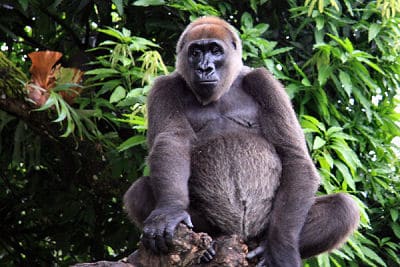
Nyango was rescued from a poacher and taken to the Limbe Wildlife Center in Cameroon in 2007.
©Arend de Haas / Creative Commons – License
There’s only ever been one Cross River Gorilla in a wildlife center.
Nyango was rescued from a poacher and taken to the Limbe Wildlife Center in Cameroon in 2007.
She passed away in October 2016 after a long illness, but while she was there gave conservationists the chance to observe Cross River Gorilla behavior more closely than ever before.
10. They Are Incredible Parents
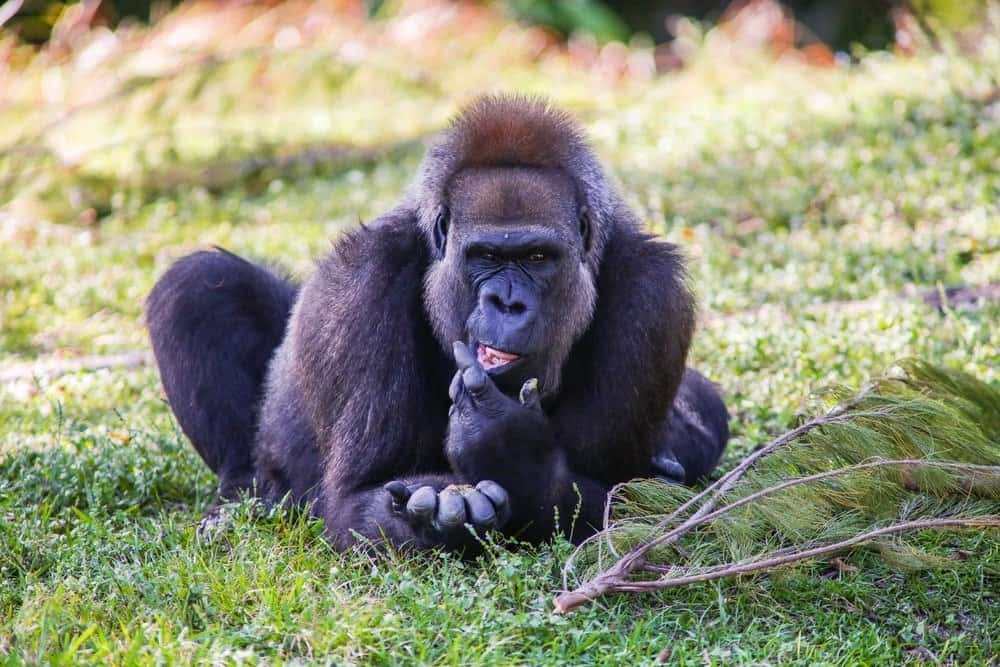
They care for their young apes until they’re at least three to four years old.
©Kit Korzun/Shutterstock.com
Here’s our 10th incredible Cross River Gorilla fact!
They care for their young apes until they’re at least three to four years old. During these early years, females do not give birth to further babies but devote their attention to their current offspring.
An article in Molecular Biology examined whether their reduced population made in-breeding a threat to their health, but scientists found individuals traveled between groups to mate.
This is great news for Cross River Gorilla health and a sign we need to stop habitat fragmentation.
Bonus Fact! They Are Almost As Fast As Usain Bolt
Usain Bolt can run at 44.72 kilometers (27.8 mph) an hour on the racetrack. In the wild, Cross River Gorillas can reach an incredible speed of 40 kilometers (24.8 mph) an hour – that’s almost as fast!
For comparison, the average human runs at 16 kilometers an hour. Cross River Gorillas would easily outpace a human in a short sprint, but they lag behind the fastest animal on Earth.
That tile belongs to the peregrine falcon who can dive at an astonishing 242 kilometers (150 mph) an hour!
The photo featured at the top of this post is © Kit Korzun/Shutterstock.com
Thank you for reading! Have some feedback for us? Contact the AZ Animals editorial team.




